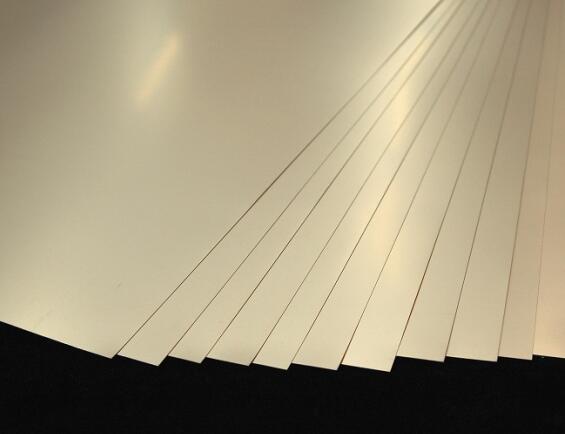PCB board is the basic material of PCB, often referred to as the substrate. The material of the circuit board is a copper-clad plate. Copper Clad Laminate (CCL) is a product made from reinforced materials such as wood pulp paper or fiberglass cloth, impregnated with resin, and coated with copper foil on one or both sides. It is also known as a substrate and is also known as a core board (CORE) when used in the production of multi-layer boards. The copper-clad plate is a fundamental material in the electronic industry, mainly used for processing and manufacturing printed circuit boards (PCBs). It is widely used in electronic products such as televisions, radios, computers, computers, mobile phones, and communication.

PCB board material
PCB board materials can generally be divided into two categories: rigid substrate materials and flexible substrate materials. The rigid substrate material is usually a copper-clad plate, which is made by using reinforced material, impregnated with resin adhesive, dried, cut, and stacked into blanks, then covered with copper foil, using steel plate as a mold, and processed by high-temperature and high-pressure forming in a hot press. The semi-finished products (mostly made of glass cloth soaked in resin and dried) of copper-clad panels during the production process are usually semi-cured sheets for multi-layer PCB boards.
At present, the supply of copper-clad panels in the market can be mainly divided into the following categories based on the substrate: paper substrate, fiberglass cloth substrate, synthetic fiber cloth substrate, non-woven fabric substrate, and composite substrate. Different insulation materials can be divided into paper substrate, glass cloth substrate, and synthetic fiberboard; According to the different types of adhesive resins, they can be further divided into phenolic, epoxy, polyester, and polytetrafluoroethylene; can be divided into general and special types according to its purpose.
According to different classification standards, the classification is as follows
1: According to the mechanical stiffness of copper-clad plates, they are divided into rigid copper-clad plates and flexible copper-clad plates.
2: According to the insulation material and structure of the copper-clad plate, it can be divided into organic resin copper-clad plate, metal-based copper-clad plate, and ceramic-based copper-clad plate.
3: Divided into flame retardant board and non-flame retardant board according to the flame retardant level: According to UL standards (UL94, UL746E, etc.), the flame retardant level of the rigid copper clad board is divided into four different types of resistance combustion levels: UL-94V0 level; UL-94V1 level; UL-94V2 level and UL-94HB level.
4: According to the thickness of the copper-clad plate, it is divided into the thick plate (with a thickness range of 0.8~3.2mm (including Cu)) and the thin plate (with a thickness range of less than 0.78mm (excluding Cu)).
5: Copper-clad laminates can be divided into five categories based on their reinforcing materials:
Paper-based
Glass fiber cloth base
Composite base
Laminated multi-layer board foundation
Special material base (ceramic, metal core base, etc.)
Copper-clad laminates can be divided into:
Common paper-based CCIs include phenolic resins (XPc, XxxPC, FR-1, FR-2, etc.)
Epoxy resin (FE-3)
polyester resin
Other special resins (with glass fiber cloth, polyimide fiber, non-woven fabric, etc. as added materials):
(1) Bismaleimide imide modified triazine resin (BT)
(2) Polyimide resin (PI)
(3) Diphenylene ether resin (PPO)
(4) Maleic anhydride imine styrene resin (MS)
(5) Polycyanate ester resin
(6) Polyolefin resin
PCB board, as a support body for electronic components, has a wide range of uses and excellent characteristics such as heat dissipation and insulation. There are four commonly used materials: FR-4, resin, fiberglass cloth, and aluminum substrate.
1.FR-4
FR-4 is only a heat-resistant material grade rather than a name, referring to the material specification where resin materials must extinguish themselves after combustion. Currently, there are many types of FR-4 grade materials used in circuit boards, most of which are composite materials made of Tera FuncTIon epoxy resins and fillers, as well as fiberglass.
2. Resin
An epoxy resin material commonly used in the PCB industry, thermally cured materials can produce polymer polymerization reactions. Resin has excellent electrical insulation and can serve as an adhesive between the copper foil and reinforcement (glass fiber cloth), with characteristics such as electrical resistance, heat resistance, chemical resistance, and water resistance.
3. Glass fiber cloth
Inorganic compounds are fused at high temperatures and then cooled and converged into amorphous hard materials, which are interlaced by warp and weft to form reinforcing materials. The commonly used specifications for E-glass fiber cloth include 106, 1080, 3313, 2116, and 7628.
4. Aluminum substrate
The main component of the aluminum substrate is aluminum, which is composed of copper skin, an insulation layer, and an aluminum sheet. The aluminum substrate has excellent heat dissipation function, so it is now widely used in the LED lighting industry.
As an important component of electronic products, circuit boards are made of substrate materials for PCBs. Throughout the entire printed circuit board, they mainly bear the functions of conductivity, insulation, and support. PCB performance, quality, processability in manufacturing, cost, and processing level all depend on the basic materials.
The substrate is an insulating layer board composed of polymer synthetic resin and reinforcing materials; The surface of the substrate is covered with a layer of pure copper foil with high conductivity and good weldability, commonly used with a thickness of 35-50/ma; The copper clad plate covered with copper foil on one side of the substrate is called a single-sided copper clad plate, and the copper clad plate covered with copper foil on both sides of the substrate is called double-sided copper clad plate; Whether the copper foil can be firmly covered on the substrate depends on the adhesive.
The correct selection of PCB board materials is crucial as their selection can affect the overall performance of the circuit board. Other benefits of carefully selecting PCB materials include controlling trace impedance, reducing circuit board size, and increasing wiring density. Introducing grounding and power boards in PCB circuit boards can help further improve.